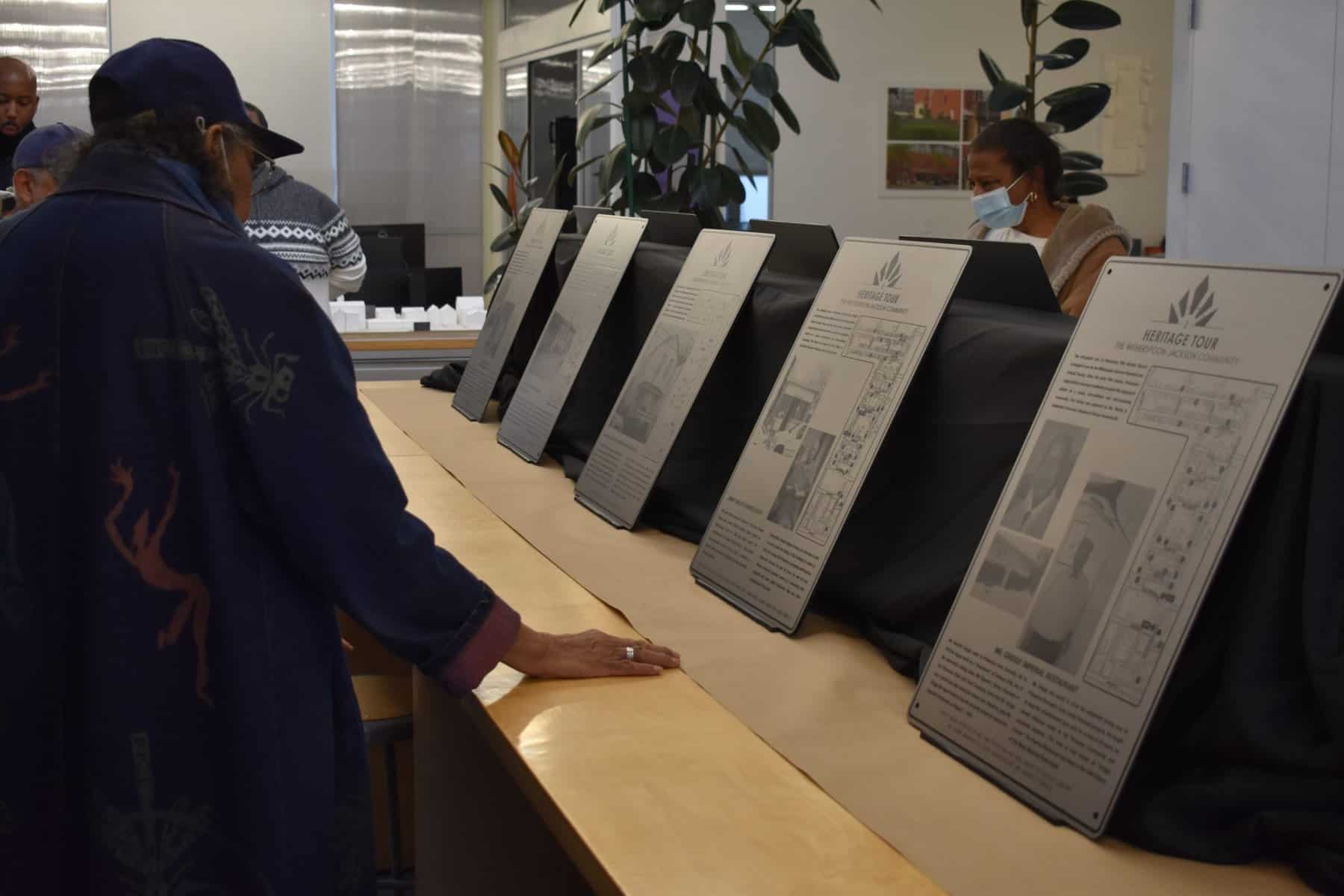Heritage plaques all across the Witherspoon-Jackson neighborhood tell the story of this particular community and its African American history.
There are 29 historic locations marked within the community, which is also Princeton’s 20th Historic District. Buildings and churches, such as Morning Star Church of God and Christ and The Witherspoon School for Colored Children, are just two examples of the 29 locations in the community with history from Witherspoon Street to Paul Robeson Place to Birch Ave and John Street.
The Morning Star Church of God and Christ for example was founded by Elder Daniel Culp Thomas in 1923. The church was originally named Church of God in Christ and the first church building still stands on Birch Avenue.
On Witherspoon Street, The Witherspoon School for Colored Children was built in 1873 and the first public school educating colored children from kindergarten through eighth grade in the Borough of Princeton.
As the Witherspoon-Jackson neighborhood historian, Shirley Satterfield, who also co-founded the Witherspoon-Jackson Cultural and Historical Society, led a special walking tour of the community’s marked historic sites on Dec. 11 as the rest of the 29 Heritage plaques were unveiled after there completion over the course of four-year effort.
The first four plaques were unveiled in 2019 and were for the Mt. Pisgah AME Church, the Witherspoon Street Presbyterian Church, the First Baptist Church and the Morning Star Church of God in Christ.
“When I came back home in 1981, I was asked to join the Historical Society of Princeton and I noticed that not only being the only African American they were not talking about anything but White history,” Satterfield said. “Not knowing that there are ethnic people in Princeton. There are Italians, Hispanics and African Americans.”
Their first exhibit on African Americans took place in 1995.
“I said this can’t stop here,” Satterfield said. “That is when I started the tours. While on the Historic Preservation Commission I said this needs to be Princeton’s 20th Historic District it should have been the first.”
The clubhouse eight, as she called them, worked for two years to help make the Witherspoon-Jackson neighborhood the 20th Historic District. In 2016, the neighborhood became the 20th Historic District.
“I said we can’t stop here and started the Witherspoon-Jackson Cultural and Historical Society,” she said. “African Americans were not just here in the Witherspoon-Jackson community, there were African Americans all over Princeton. But, we were relegated here because of Palmer Square we moved further down and Jackson Street changed. That is why I did this and have been doing the tours for a long time.”
After the tour, people gathered at Studio Hillier, which is the office of local architect J. Robert Hillier, to view 10 of the Heritage plaques that could not be installed just yet at site locations until the buildings are ready.
The plaques viewed at Studio Hillier included the Elks Home-Lodge 178 on Birch Ave, which to this day still holds meetings and fraternal events. Another plaque will mark the location for Pearl Moore Allen’s Tavern on Witherspoon Street; the establishment was a meeting place for neighborhood residents and in the 1940s and 1950s migrant workers traveled to the tavern during the summer months.
Additionally, one of the 10 plaques that was on display in Studio Hillier explains the marked history for multi-cultural stores on Leigh Avenue. According to the history, Negro residents were not welcomed in stores south of Jackson Street. From the 1930s through the 1960s the portion of Leigh Avenue had owners and operators of stores who were Negro, Greek, Italian and Jewish.
“People are aware of the Witherspoon-Jackson neighborhood, but not necessarily aware of the history. People do ask about the history,” Satterfield said. “When people move into this community or any community they need to know the history, because they move and change the houses.”
Each plaque not only tells the history of each of the marked sites, but also includes a map created by Hillier of where all 29 marked locations are in Princeton’s 20th Historic District.
“It took about four years to get the renderings for the plaques and how we were going to do it. We have changed it so many times and to make sure we did the map,” she said. “Not only did I do this, but Mr. Hillier did a lot of work and did the map. I just did the information and gave the pictures.”
Due to James R. Ferguson, a landowner in Princeton, the Witherspoon Jackson neighborhood would be established in the 1830s. The Ferguson Tract extended from Witherspoon Street to John Street.
In the late 1800s, the African American population in the neighborhood would grow. The community would also contain Irish families and Italian immigrants.
“I want people to have respect for who was here when they take one of the tours or do their own self-guided tour,” Satterfield said. “I also want people who move here to be a part of loving and caring community and be a part of the community.”

